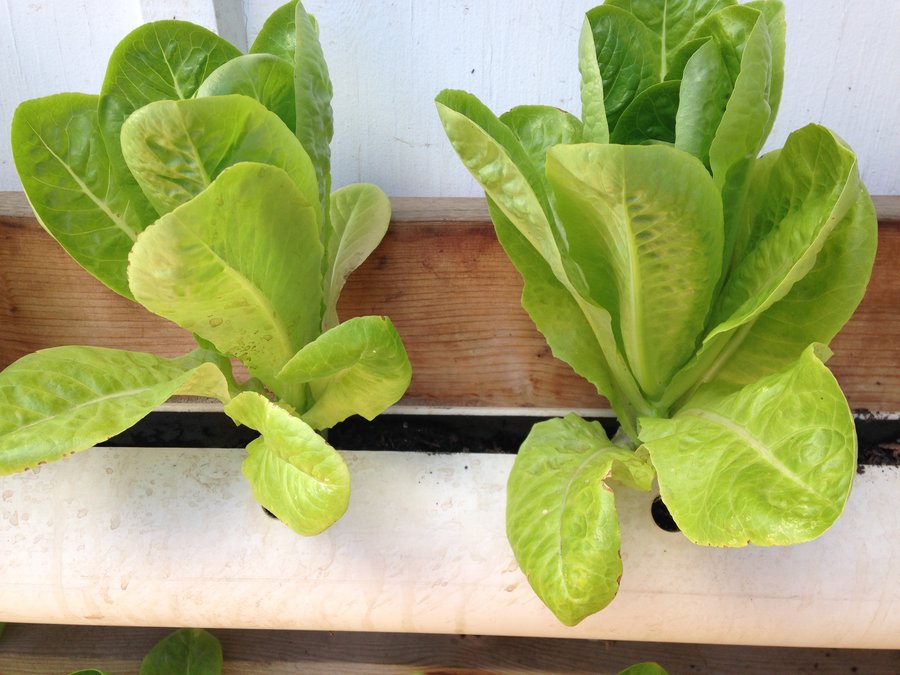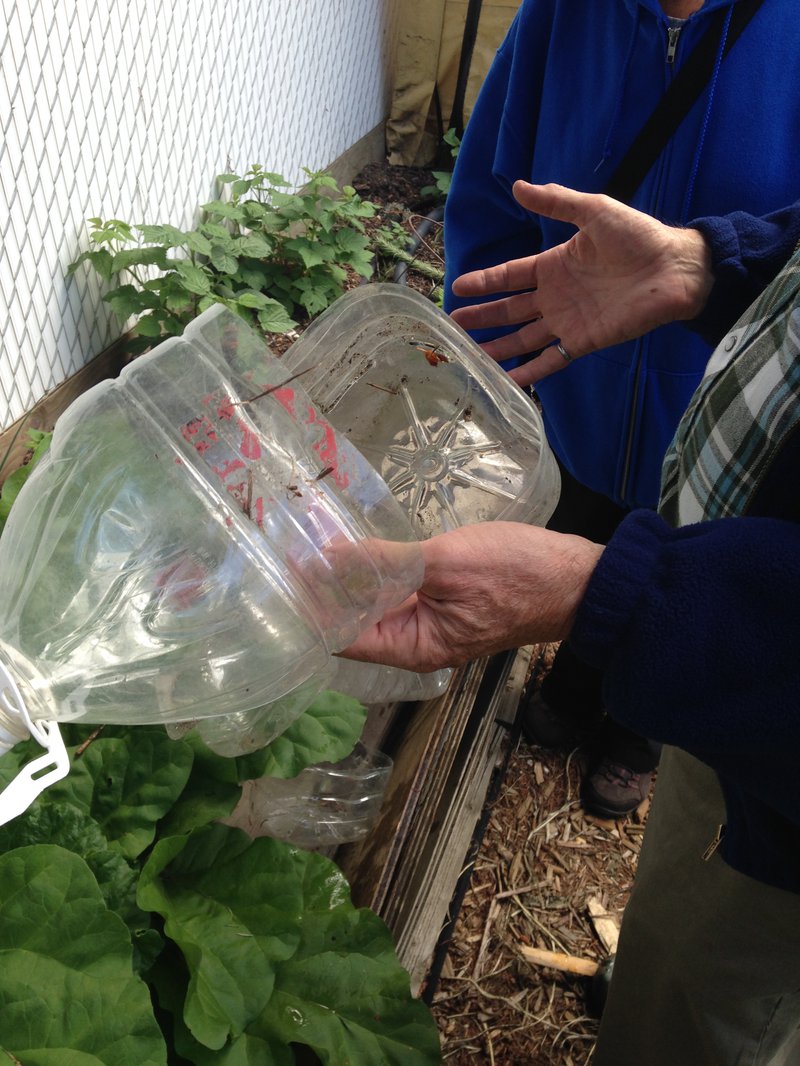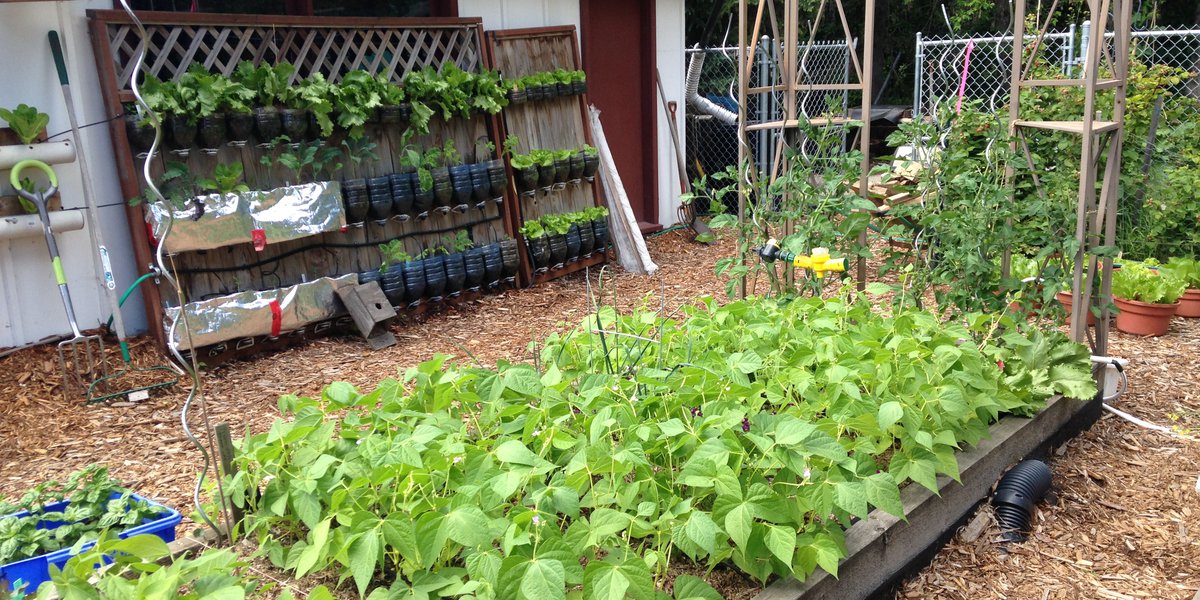As we learned in last week’s post, Jim Stevenson has a backyard that he has turned into a large, high yielding vegetable garden. So high yielding in fact that he and his wife can’t eat or preserve all that he can grow! He now donates his extra vegetables to Edmonton’s Food Bank as part of the Plant a Row, Grow a Row, Share a Row Program. In 2018, Jim donated 161 kilograms of garden fresh vegetables to Edmonton’s Food Bank.
Here are some of his tips for getting the most out of your backyard vegetable patch.
Remember you can garden even if you don’t have space for a traditional in ground plot.
Raised beds, container gardening and vertical gardening are all ways to create garden space or expand your traditional growing spaces. Jim’s garden is a combination of all these. Of raised beds he says, “They provide the advantage of warming up sooner in the spring, they are easier on the back to work with, and, combined with intensive planting techniques, reduce the need for weeding and watering.” Beginners can start small and expand their raised beds or add containers and vertical space as they gain experience.
Article continues below photo

Container Gardening has its Benefits
- Containers add to the area available for crops making gardening possible where there is no in-ground space or where digging in the ground is not possible.
- Containers can be filled with the best soil/soil-substitutes. The food for your garden is totally in your control.
- Containers can be moved to sunny or shady areas depending on what the plants need. If you have a plant in one spot and find it isn’t doing well it can easily be moved with no digging required.
- Containers can be placed in warm locations (indoors or in a garage or shed) when frost threatens in the spring and fall.
- Any container will do – this is a great opportunity to re-use/recycle, or build your own. Jim uses a lot of one litre ice cream pails for peppers and tomatoes.
The main drawback is containers dry out easily and need to be watered regularly every day or two. If you can’t do this yourself a water controller/timer can make sure it gets done when you are not around. Jim also uses ‘global buckets’: two nested plastic buckets with soil in the inner bucket and the outer bucket acting as a reservoir to extend the time between watering.
Article continues below photos


No Horizontal Space? Go Vertical!
This is a variation on container gardening where the containers are fastened to a vertical surface like a wall or fence. These containers can be ready made or upcycled from eaves troughing, plastic drain pipe or old water and milk jugs.
Now you have space, what should you plant?
Jim like crops that don’t require daily attention but yield a lot of produce, such as, peas, bush beans, carrots, lettuce, onions, kale and Swiss chard. To extend the season for some crops he suggests succession planting “for instance, planting a new row of onions every two weeks to have an ongoing supply.”
To help keep the harvest going Jim also practices ‘Just in Time” planting. He starts seeds indoors or in containers ahead of time so they are ready to be planted by the time the first crop is done. “Let’s say you’ve just torn out the peas which have stopped producing, you can immediately put in the seedlings at adult spacing – no need for thinning later and no need to wait for seeds to germinate,” says Jim.
By using these techniques Jim grows more than enough for his family, so he decided to share with others through the Plant a Row, Grow a Row, Share a Row program at Edmonton’s Food Bank. Helping provide more fresh produce for those in need in Edmonton.
For more information on the program visit the Plant a Row, Grow a Row, Share a Row page on our website.



